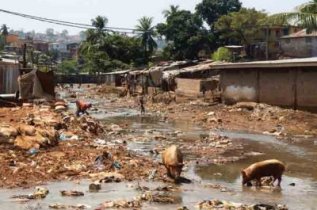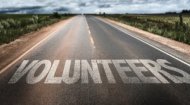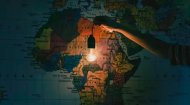|
|
|
Life in Sierra Leone |
Life in Sierra Leone |
Life in Sierra Leone | Life in Sierra Leone |
Facts, videos, articles and information about
the situation in Sierra Leone in our profile pages.
More >
 |


The cooking area is where children will usually congregate after eating to hear stories and receive instruction from their elders in a society that is noted for its politeness and good manners. There are no streets as such in Sierra Leonean villages, just clusters of houses constructed as and where their anacestors owned land, however each village has its own shops and market places as well as a chuch/mosque, village school and latrines and often a cemetary on the borders of the village. Life in Sierra Leone is fairly typically for that in Africa with women subordinate to the men they marry with those men undertaking most physically intense work such as clearing fields and seeing to the swamps, known as 'Bolilands', with 'boli' a Temne word for lands that are flooded in the rainy season and dry and hard in the dry season, most prevelant along coastal areas. Planting, harvesting, weeding, gathering wood, cooking, cleaning, marketing, and child care are duties normally the preserve of women, assisted by the younger children, especially girls. The youngsters rarely see this as a burden, rather a mark of pride in their ability to contribute to the welfare of the household. For more about life for children in Sierra Leone check out the articles above whilst the video provides some insights into daily village life in the country. |







